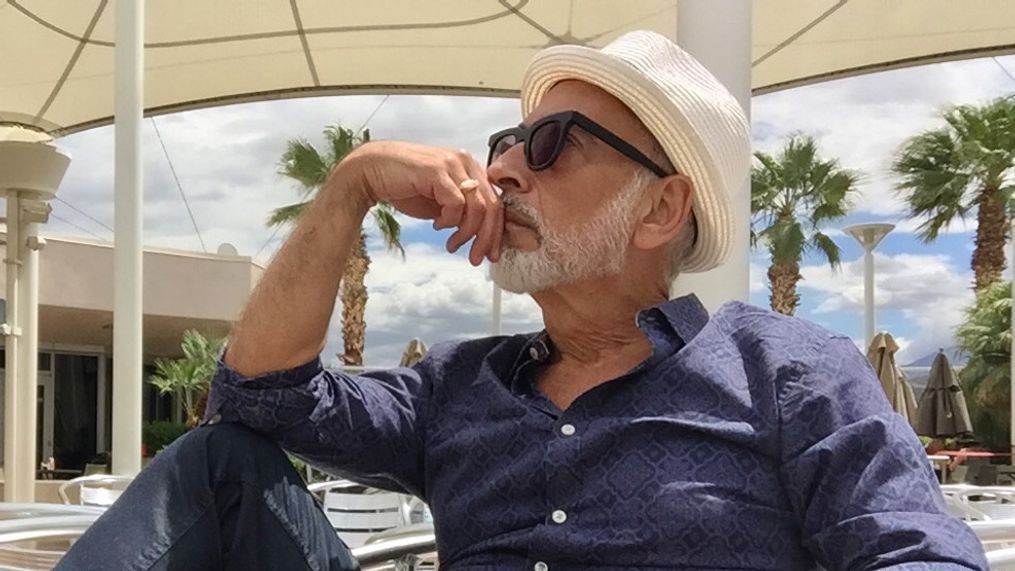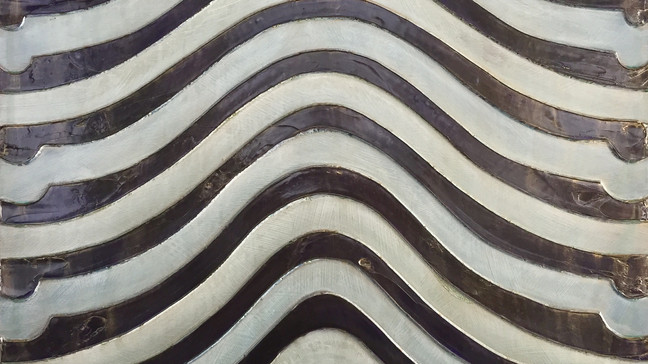Artist of the Week: Juan Alonso-Rodríguez
Juan Alonso-Rodríguez is a Cuban-born artist who lived in Seattle for 40 years and now resides in St. Petersburg, Florida.
Seattle Refined: How long have you been creating? What mediums do you work with?
Juan Alonso-Rodríguez: I've been creating as far back as I can remember. As a kid, drawing, working with clay and using paper and wire to build structures were my go-to pastimes, but it wasn't until I moved to Seattle in 1982 that I started being more serious about painting and considering art as a career. My boss at Park Lane Framing encouraged me to hang work in his Belltown shop, which gave me visibility and opportunities I wouldn't have had without his encouragement. Seeing the public's reaction to my work firsthand, gave me the confidence to move forward and pursue something I have always loved to do.
Can you tell us about your artistic process and how the different stages work into it?
It all begins with a concept or idea, followed by figuring out the best way to convey that idea. I've never been interested in "hitting anyone over the head" with direct messages, so I lean towards inviting people to bring in their own experiences into the process of looking at the work. Physically, there is a lot of preparation, whether I work on paper, canvas or wood panels. What people actually see when the work is finished, is really like the tip of an iceberg. I spend a lot of hours trying to make something look simple. For example, the work from my Strata series begins with a design cut out from cardboard, which gets taped to the already primed wood panels and spaces between cardboard strips get filled with molding paste to create a 3D effect. Once the molding paste is dry, I apply very bright base colors that slowly become subdued with approximately twenty layers of translucent paint that are topped with four layers of UV protective varnish. For public projects, there are many other things to consider besides concept and craftsmanship. Safety, engineering and durability are just as important for a successful project.
Tell us about where your inspiration for your art comes from.
Inspiration can come from anywhere and often when I least expect it. Though nature, water, architecture, balance and perceived symmetry are always part of the equation, I'm often inspired by places I travel to or music or situations happening that are out of my control. Though I've never lived in the desert, I've found myself making a lot of work inspired by it. The uniqueness of a place like Joshua Tree National Park has triggered the making of drawings, paintings and sculptures. It is almost impossible for me to see a totally different landscape to what I'm used to and not be moved to honor it in some way.
Do you have a specific "beat" you like best – nature, food, profiles, etc.?
I'm primarily an abstract guy. Even when I am addressing a very specific idea, I like to go about it in a roundabout way, suggesting instead of telling the viewer what to think. This also gives me and other people the opportunity to get momentarily lost in incidental and physical aspects of the work without necessarily taking in the complete picture at first.
Do you have one piece of art that means more to you or is extremely special to you?
Whatever the last work I finish is usually the most important at the time, which makes it forever changing. The attachment I have to my work is transitory because what I value the most is the actual process and experience of making it. Once finished, though I do take pride in the accomplishment, I feel that it becomes an object that is meant to make other people happy, as I have already gotten the satisfaction I needed from creating it.
What experiences in your life have affected your art the most?
I think we are all "stamped" with certain childhood experiences, and when some trauma has been involved during that period, perhaps those experiences get amplified and last longer than for others whose early life has been more stable. My childhood in Cuba has always affected my creativity. I left without my immediate family when I was 9 and came to an unfamiliar place and a language I didn't speak. Although the move was a positive one, I felt a loss and also a desire to keep memories of my childhood and family very much alive. I can trace the origins of much of my work to that period of drastic change at such a young age. The work in my Horizon series goes back to memories of time spent at the beach with my family looking straight out to the ocean, knowing so many of us, including myself, would end up on the other side of that horizon and separated by politics and a vast ocean in between. The Baranda Project is a tribute to the railings that adorned our family home, designed and built by my father.
If we want to see more of your work, where should we go to find it?
In Seattle, I am fortunate to be represented by ArtX Contemporary. My website is a great place to explore and lets the viewer know where each artwork is currently located and whether it is available, has been sold or is located in a public space. I am also represented in Oakland by SLATE contemporary and in Scottsdale by Jorge Mendez Gallery. My St Pete studio is open by appointment and for the second Saturday Art Walk from 5 to 9 p.m.
What is next for you? Anything you're working on right now that you're really excited about?
I'm currently in the Neddy Awards 25th Anniversary Exhibit at MOHAI and in the Midtown Soul show at ARTE NOIR, a nonprofit that I also serve on its board. Later this year, I will be installing some stainless steel inserts and sandblasted stencils on the perimeter/sidewalks at Tapestry, a new development on 12th Avenue between Fir & Yesler.
Lastly, how do you take your coffee? (We ask everyone!)
In the morning, I don't function until I've had my triple espresso made in my home Breville machine with some caramel creamer. Mid-afternoon is always a shot or two of espresso with sugar.
About 'Artist of the Week': This city is packed with artists we love to feature weekly on Seattle Refined! If you have a local artist in mind that you would like to see featured, let us know at hello@seattlerefined.com. And if you're wondering just what constitutes art, that's the beauty of it; it's up to you! See all of our past Artists of the Week in our dedicated section.





